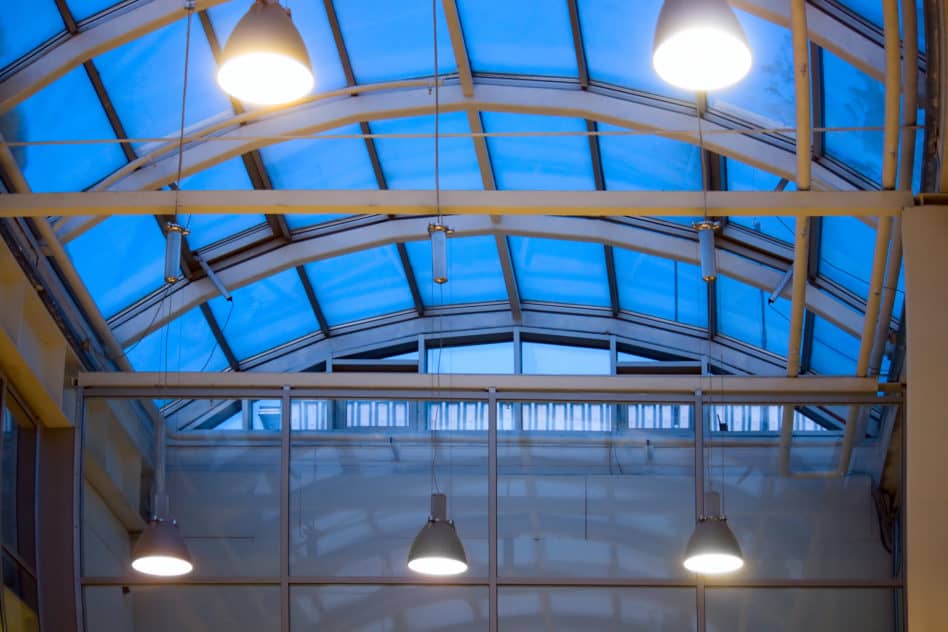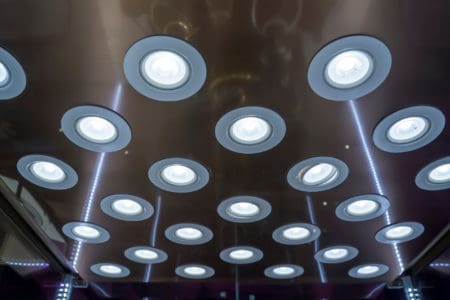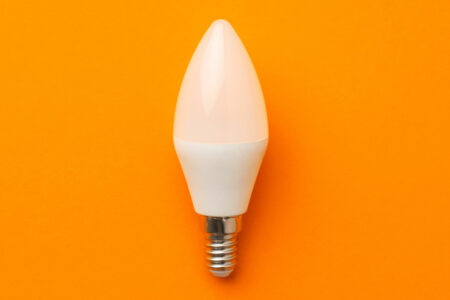Illuminance in lux plays a major role in the planning of lighting installations. The brightness of LED lamps and light sources, on the other hand, is expressed in lumens. Here you can find out the correlation between the two quantities and how to convert lumens to lux correctly. An easy online calculator will help you with the conversion.
About lux and lumens
The illuminance of one or more light sources is expressed in lux. This indicates the luminous flux used to illuminate a defined area. Illuminance in lux is therefore an important planning parameter for lighting systems. This does not determine the luminous flux emitted by the light source, but the luminous flux received depending on the beam angle and distance.
The brightness of LED lamps is usually expressed in lumens. This is the luminous flux emitted by the lamp in all directions. In the case of conventional light sources, the power in watts was often used to determine brightness. However, this information is less relevant than the lumen value due to the different light output ratios of modern LED lamps.
Difference between lux and lumens
The emitted luminous flux (in lumens) of an LED lamp is a transmission quantity. The illuminance (in lux) describes the luminous flux received and is therefore a reception quantity.
Lux to lumens conversion
In order to convert lux to lumens or lumens to lux, the correlation between the two quantities must be found. Since it is the emitted light on the one hand and the received light on the other hand, other factors also play a role. These are the beam angle and the distance between the light source and the illuminated surface.
The larger the beam angle and the distance, the larger becomes the light circle below the lamp. In this case, the lumen value per square foot decreases and the illuminance or lux value decreases too. A lamp of the same brightness with a small beam angle or short distance is the opposite. The same light output falls on a smaller area, which increases the lux value.
How many lumens has a lux?
1 lumen (lm) per square metre (m²) corresponds to 1 lux (lx). 1 lumen (lm) per square foot (ft²) corresponds to 10.764 lux (lx). The following calculator will help you to convert between the two values.
Lumens to Lux Calculator
The free online calculator helps you to convert between lux and lumens and vice versa. Here you can calculate the approximate illuminance or light output using the given beam angle and the distance between luminaire and illuminated plane (floor, table, work surface, wall).
Calculation examples
Convert lux to lumens
Example: An illuminance of 300 lux should be generated on a surface 6 ft below a spotlight with a beam angle of 30°. You want to know how much lumens the spotlight must have.
In the calculator, select Lux to Lumen as Conversion and enter 300 as the lux value, 30 as the beam angle and 6 as the distance. After a click on the Calculate button, the size of the illuminated surface and the required lumens value are displayed.
Convert lumens to lux
Example: A spotlight with a beam angle of 110° and a light output of 470 lumens is mounted at a height of 6.5 ft above a table. You want to find out how much lux the table is illuminated with.
Select Lumen to Lux in the calculator and enter 470 as the lumen value, 110 as the beam angle and 6.5 for the distance. After a click on the Calculate button you will see the size of the illuminated area and the lux value.
What to pay attention to?
When using a single light source, it should be noted that the light distribution of many LED spotlights does not always have to be uniform within the beam angle. Especially in the peripheral areas, the luminous intensity usually decreases. So the illuminance in the light circle is not homogeneous.
For the complete illumination of rooms or specific areas with a minimum illumination intensity, in most cases several LED luminaires are used. The positions of the individual lights are chosen in a way that the light cones overlap. In order to ensure homogeneous lighting with a corresponding lux value, a professional light planning should be involved.
Conclusion
Now you know the correlation between lux and lumens in connection with distance and angle. The online calculator will help you to find a reference point for your lighting design. To be really sure whether the desired illuminance is achieved with the installed luminaires, it can be checked with a lux meter at the appropriate distance from the light source.






